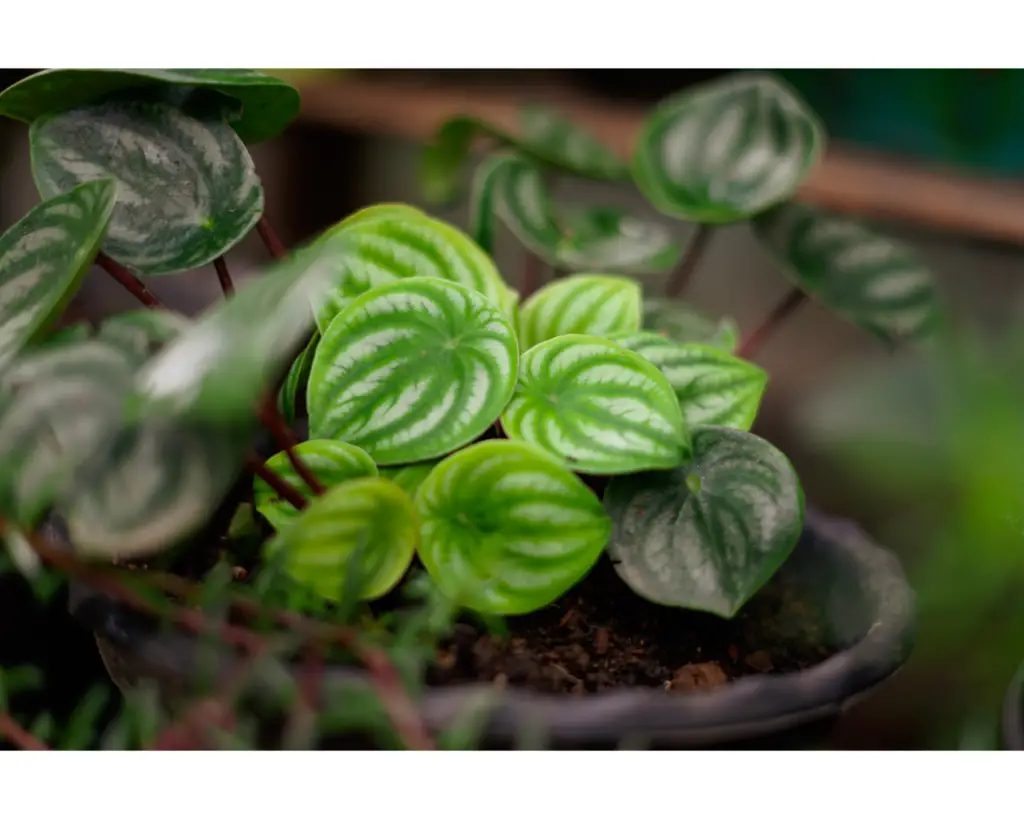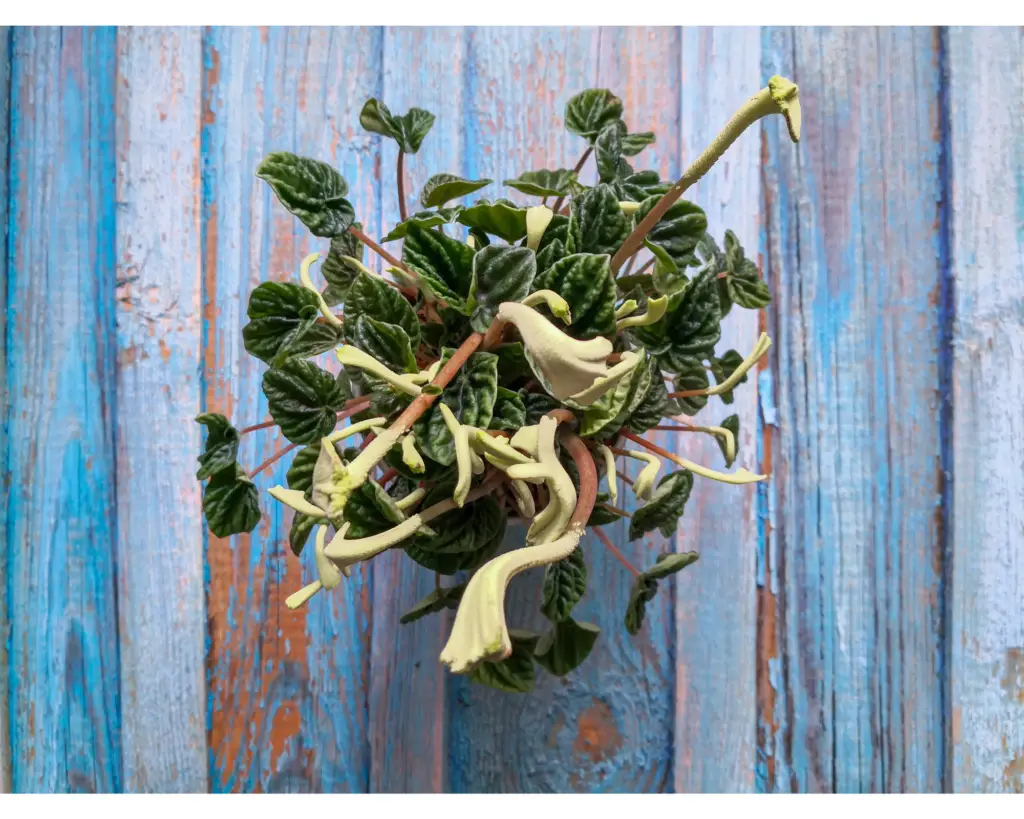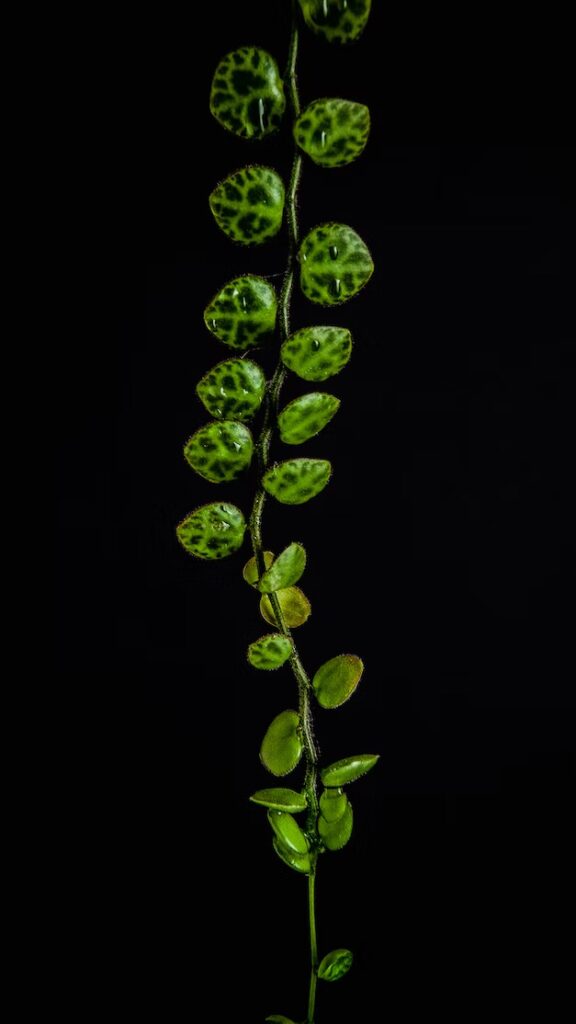Peperomia plants are a popular choice for indoor gardeners due to their unique foliage and ease of care. These plants are native to Central and South America and belong to the Piperaceae family, which includes black pepper and kava. With over 1,000 species and cultivars, there is a peperomia plant for every taste and space. One of the unique features of peperomia plants is their ability to purify the air. According to a study by NASA, peperomia plants can effectively remove toxins such as formaldehyde and benzene from indoor air. They are also non-toxic to pets, making them a safe choice for households with furry friends. These plants are easy to care for, compact, and come in a variety of shapes and colors. In this article, we will discuss the basics of caring for a peperomia plant.
Table of Contents
Types of Peperomia
Peperomia plants come in a variety of shapes and sizes, ranging from small, compact varieties to trailing vines. Some of the most common peperomia species include the Watermelon Peperomia (Peperomia argyreia), which has silver and green striped leaves resembling a watermelon rind; the Radiator Plant (Peperomia obtusifolia), which has glossy green leaves that can range from solid to variegated; and the String of Turtles (Peperomia prostrata), which has small, round leaves with a pattern resembling a turtle’s shell.



Care and maintenance
One of the great things about peperomia plants is that they are relatively low maintenance. They prefer bright, indirect light but can also thrive in low-light conditions, making them a great option for offices and homes with limited natural light. Peperomia plants also prefer well-draining soil and can be propagated through stem cuttings, making them an ideal choice for beginner gardeners.
Choosing the right pot and soil
Peperomia plants prefer to be grown in small to medium-sized pots with well-draining soil. The pot should have drainage holes to prevent water from pooling at the bottom. The soil should be well-draining, as these plants do not like to sit in wet soil for extended periods. A mix of potting soil and perlite or coarse sand will create an ideal environment for the plant’s roots.
Light requirements
Peperomia plants prefer bright, indirect light. Direct sunlight can cause the leaves to burn, while low light can lead to stunted growth and leggy stems. A north-facing window or a few feet away from a bright, south-facing window can provide the perfect amount of light. If you notice the leaves of your plant turning yellow, it may be getting too much light. Move the plant further away from the window or use a sheer curtain to filter the light.
Watering
When it comes to watering peperomia plants, less is more. These plants are sensitive to overwatering and can easily develop root rot if left in waterlogged soil. Water the plant thoroughly, allowing excess water to drain from the pot’s bottom. Wait until the top inch (2.5 centimetres) of soil is dry before watering again. During the winter months, when the plant is in a dormant state, water less frequently. When it comes to watering, peperomia plants prefer to be on the drier side. It’s important to let the top inch of soil dry out before watering again, as overwatering can lead to root rot. Peperomia plants are also sensitive to fluoride in tap water, so it’s best to use distilled or filtered water if possible.
Humidity
Peperomia plants prefer moderate to high humidity levels. Dry indoor air can cause the plant’s leaves to brown and curl. To increase the humidity, you can place a small humidifier near the plant or use a pebble tray. Fill a shallow tray with pebbles and water, making sure the water does not touch the bottom of the pot. As the water evaporates, it will increase the humidity around the plant.
Fertilising
Peperomia plants do not require frequent fertilisation. During the growing season, which runs from spring to fall, you can fertilise your plant once a month with a balanced fertiliser. Dilute the fertiliser to half the recommended strength to avoid over-fertilising. During the winter months, when the plant is dormant, skip fertilisation altogether. During the growing season, which typically lasts from spring to fall (autumn), peperomia plants can benefit from a balanced fertiliser every 4-6 weeks.
Pruning and Propagation
Peperomia plants do not require extensive pruning, but it is a good idea to remove any yellow or damaged leaves as they appear. This will prevent the plant from wasting energy on leaves that cannot produce energy through photosynthesis. You can also pinch back the stems to encourage bushier growth.
Peperomia plants are easy to propagate through stem cuttings. Select a healthy stem, cut a few inches from the tip, and remove the lower leaves. Dip the cut end in rooting hormone, and place it in a pot filled with moist potting soil. Cover the pot with a plastic bag to create a mini greenhouse. Keep the soil moist and in a bright, indirect light until new growth appears.
Common problems
Peperomia plants are relatively trouble-free, but they can experience a few issues. Here are some common problems and how to solve them:
- Brown, crispy leaves: This is a sign of low humidity. Increase the humidity around the plant by using a humidifier or pebble tray.
- Yellow leaves: This can be a sign of overwatering, underwatering, or too much light. Check the soil’s moisture level and adjust the watering schedule as needed. Move the plant away from direct sunlight if it is getting too much light.
- Leggy growth: This can be caused by low light or infrequent pruning.
- Drooping leaves: This can be a sign of underwatering or overwatering. Check the soil’s moisture level and adjust the watering schedule accordingly.
- Root rot: This is caused by overwatering and can be identified by a foul odor, mushy roots, and yellowing leaves. If caught early, you can cut away the affected roots and repot the plant in fresh soil. However, if the damage is severe, the plant may not recover.
- Mealybugs: These are small, white insects that can infest the plant’s leaves and stems. They can be removed by wiping the affected areas with a cotton swab dipped in rubbing alcohol or by using an insecticidal soap.
- Spider mites: These are tiny, spider-like pests that can cause damage to the plant’s leaves. They can be removed by wiping the affected areas with a damp cloth or by using an insecticidal soap.
Conclusion
Peperomia plants are a great choice for indoor gardening enthusiasts, as they are relatively easy to care for and come in a variety of shapes and colors. To ensure the health and vitality of your peperomia plant, it is essential to choose the right pot and soil, provide adequate light and humidity, water appropriately, fertilize during the growing season, and prune as needed. Common problems with peperomia plants include brown, crispy leaves, yellow leaves, leggy growth, drooping leaves, root rot, mealybugs, and spider mites. By following these care tips and promptly addressing any issues that arise, you can enjoy a thriving and beautiful peperomia plant in your home or office.
